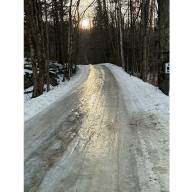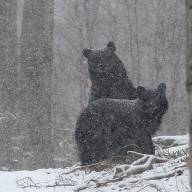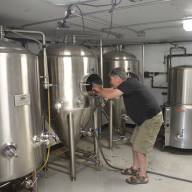Would you break up an antique chair, passed for several generations through your family, to put it into the woodstove for heat, just because it’s windy and cold outside, and you’re not motivated to go to the woodshed? Of course not.
In cleaning your grandmother’s attic would you just recycle a letter from a Civil War veteran describing what surviving a battle was like? Of course not.
Does it make sense that the Green Mountain National Forest (GMNF) proposes to harvest 336 acres of remote northern hardwood forest that has been growing since the Civil War? Of course not.
The GMNF is seeking public comment on a plan to log nearly 12,000 acres in an area north and south of the Chittenden Reservoir in central Vermont. The project is known as Telephone Gap; most of it is northern hardwood forests, and 92% of it is considered mature or old forest by GMNF definitions. An astounding 2,095 acres, or 13.7%, support forests more than 120 years old. On 488 acres, these 120-plus-year-old forests will be completely removed by clearcuts or a shelterwood harvest, which ecologically is basically a slightly slower motion clearcut. Clearcuts, or any opening larger than 1 acre, put the maximum amount of stress on a northern hardwood forest ecosystem because they also destroy the existing soil ecosystem; such harvests don’t represent best maintenance of a healthy hardwood forest.
So how rare is a 120-plus-year-old forest in Vermont? The U.S. Forest Service periodically tracks changes in the forested landscape through permanent data plots called FIA data. The most recent measurement was in 2017 and forest stands in the 121- to 140-year-old age class made up just 0.28% of Vermont’s forests. Forest stands older than 140 years are so rare that no age classes were reported in Vermont beyond that age.
Does no data reported mean northern hardwood forests die after 140 years? Not at all, most trees in them will live 250-350 years. A maple is ecologically a teen-ager at 60- to140-years-old and can store carbon rapidly. Recent research has shown that very old trees well beyond that age are still adding immense quantities of wood biomass, and even old forests that include decaying trees continue to store increasing amounts of carbon. They also maximize native species biodiversity.
Despite positive words about managing for wildlife habitat and increasing forest diversity, the harvest details indicate an approach more directed toward cutting the large trees and converting the remainder into a highly manipulated forest to maximize timber output on all 11,801 acres. Thinning harvests to increase growth rates on the best commercial trees left will occur on 3,601 acres. On all the remaining 8,200 acres, if desired seedlings or desired tree growth rates are not realized, site preparation and seedling planting can occur. Site preparation includes, within one year post harvest: “Cutting 1- to 8-inch diameter at breast height trees with hand tools to eliminate or reduce competition from residual vegetation,” and “Cutting bent or broken trees, not commercially viable, or have visible signs of disease.” (Page 20, Notice of Proposed Action, Detailed Version). This sounds more like tree-plantation management rather than careful ecological forestry of a century-plus old forest that develops critical rare habitat as it ages, maximizes biodiversity and soil health, and provides climate resiliency which cannot be replicated.
Some might argue this emphasis on rapid growth is good climate management. Common wisdom is that young forests are good for the climate because they grow fast. Or that a forest that is optimally growing timber is healthy. These are concepts related to the economics of timber production. The climate science is very clear – mature and old forests with large trees will sequester and store far more carbon in the next 30 or 50 years, the years most critical for climate mitigation, than a planted, young forest. Old trees may not maximize sawtimber production, but they are excellent at climate resilience. The Telephone Gap harvest plan does not take into account the carbon stored in the trees to be harvested, 40-60% of which quickly goes into the atmosphere because it is processed into paper or biomass to be burned, nor the additional carbon the mature forest would sequester if not harvested, nor the fossil fuels used to harvest and process the wood. It is very far from a climate neutral action, or even a balance of competing values.
This project irretrievably changes a naturally regenerated forest gem into something similar to an industrial forest. If this is not what you expect of GMNF management on public land, please advocate for the Telephone Gap Project to become a “climate forest reserve” to protect a rare Vermont landscape and provide real climate mitigation as a natural forest. Google “bit.ly/usfs0224" to go directly to the project comment page. Submit a comment with specific concerns by March 13, and contact your federal Congressional delegation.
Roe is a forest ecologist from Sharon.












